
Pitti Palace (Palazzo Pitti) - a magnificent Renaissance palace in Florence, which is the largest in the city; was previously the main residence of the Medici Grand Dukes of Tuscany, and today it is a museum.
Pitti Palace is located on the left (south) side of the Arno River, on the Pitti Square of the same name (Piazza dei Pitti).
The covered hanging corridor Vasari (Corridoio Vasariano) leads to the palace and the adjacent Boboli Gardens (Giardino di Boboli), which together with the Pitti Palace represent an outstanding palace and park ensemble, as well as the largest museum complex in Florence, widely known in Italy and abroad.
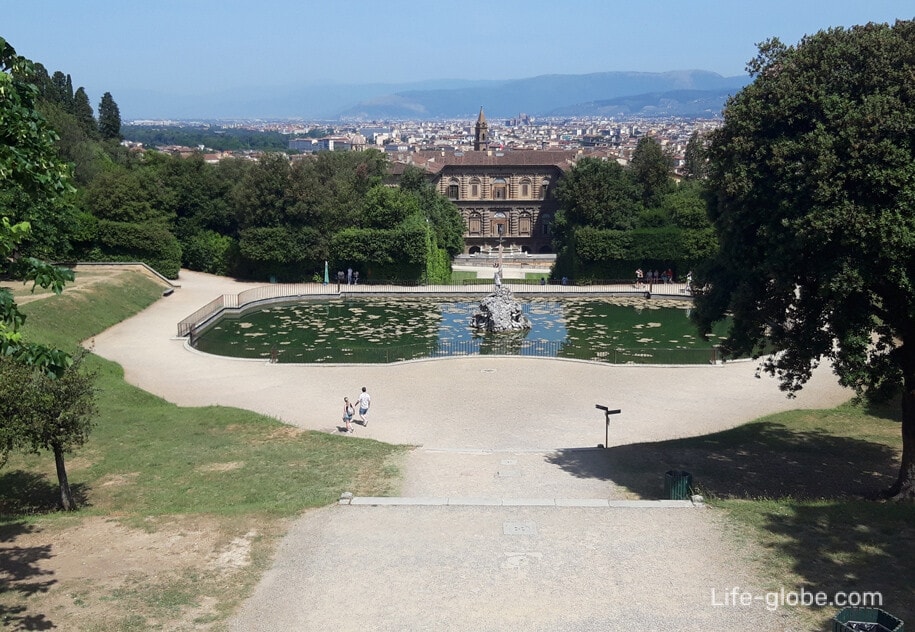
The original construction of the palace dates back to 1458, when it was built as the city residence of the banker Luca Pitti (hence the name of the palazzo "Pitti").
In 1549, the palace with its adjacent garden was bought by Eleonora di Toledo, the wife of Cosimo I de' Medici, and became the main residence of the Grand Dukes of Tuscany. Since 1737, the palace belonged to the Habsburgs-Lorraine, and after the unification of Italy, it played the role of the royal palace of the House of Savoy (since 1860), where the kings of Italy lived from 1865 to 1919. At the beginning of the nineteenth century, the palace was also used by Napoleon Bonaparte as a residence during his stay in the city. In 1919, Vittorio Emanuele III donated the palace to the state and since then it has been a museum.
During the history of the Palazzo Pitti expanded and underwent changes. So, Filippo Brunelleschi, Giorgio Vasari, Luca Fancelli, Bernardo Buontalenti, Bartolomeo Ammannati, Niccolo Tribolo and Pasquale Poccianti worked on the palace.
Today, the voluminous Pitti Palace has a monumental, mainly Renaissance facade of hewn stone with a sloping ledge and arched windows. The facade of the palace stretches for 205 meters and is 38 meters high.
Externally, the palace has a stepped appearance, decorated with typical Florentine rustication, and adjacent side wings, which were added in the 18th century.

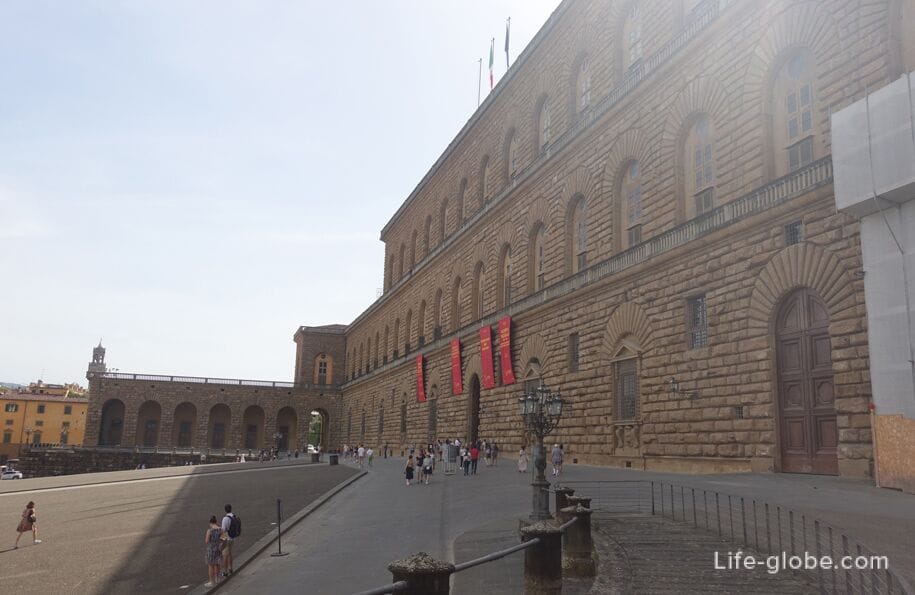

The central arched portal leads to the large courtyard of Ammannati, created by Bartolomeo Ammanati in 1558-1560.
The courtyard leads to the Boboli Gardens. The facades of the courtyard have rustics that intersect the semi-columns of the order superposition like "muffed columns", visually devaluing the tectonicity of the architectural composition.
On the ground floor of the courtyard, the palace is made in the form of an open arched gallery, where sculptures are placed.

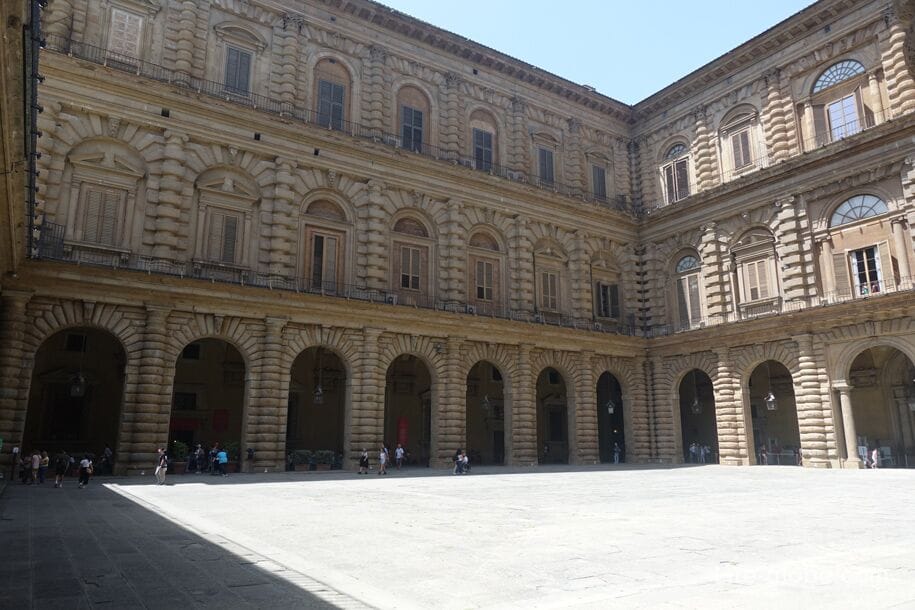
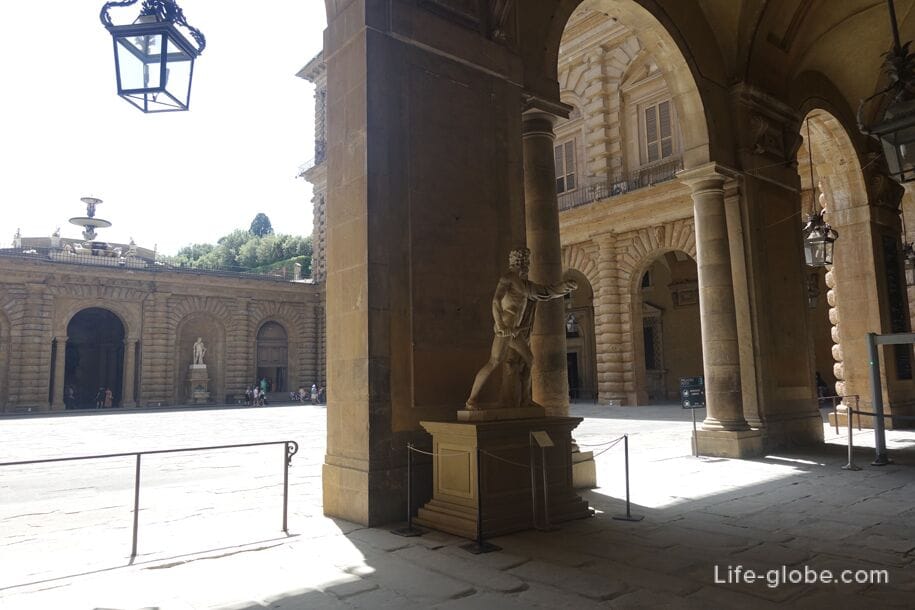
From the side of the Boboli Gardens, the courtyard is closed by a "hinged" gallery (terrace), whose ramps lead to the Boboli gardens and on which the magnificent Artichoke fountain (Fontana del Carciofo) is located.
The fountain was created by Francesco Susini and Francesco del Tadda in 1639 and installed in 1641, replacing another fountain called Juno by Bartolomeo Ammannati, some fragments of which are now kept in the Museo Nazionale del Bargello in Florence.
The name Artichoke is associated with the similarity between the leaves growing on the stems of artichokes and the decorations of the shell flaps with cupids on the sides of the staircase, on which the octagonal bowl of the fountain rests.
The fountain is decorated with sculptures of putti and various figures, among which you can see fish, hermes with festoons in the upper part and two newts in the lower part.
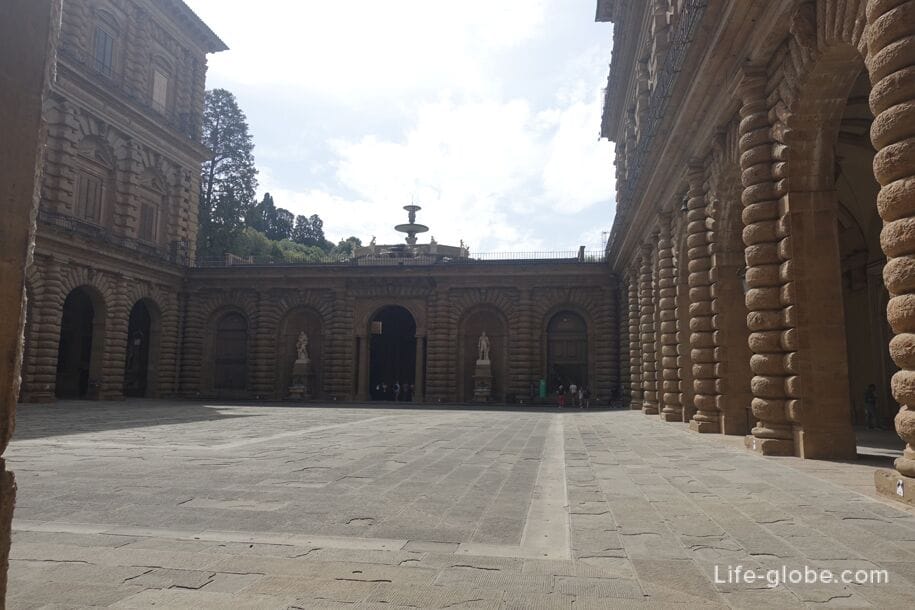
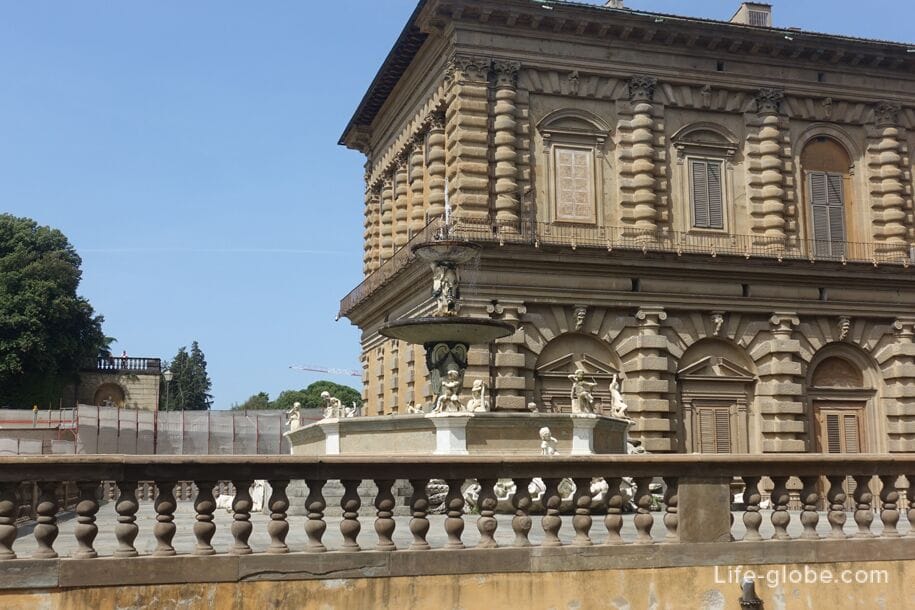
View of the terrace and Artichoke fountain from the Boboli GardensOn the side of the courtyard of the palace, the terrace has the grotto of Moses (Grotta di Mosè), named after the colossal statue of Moses made of oriental red porphyry, located behind an elliptical bowl in the center of the grotto wall.

The grotto is also decorated with statues, columns and a fountain with funny putti.
A Musical angel is depicted on the vault of the grotto.
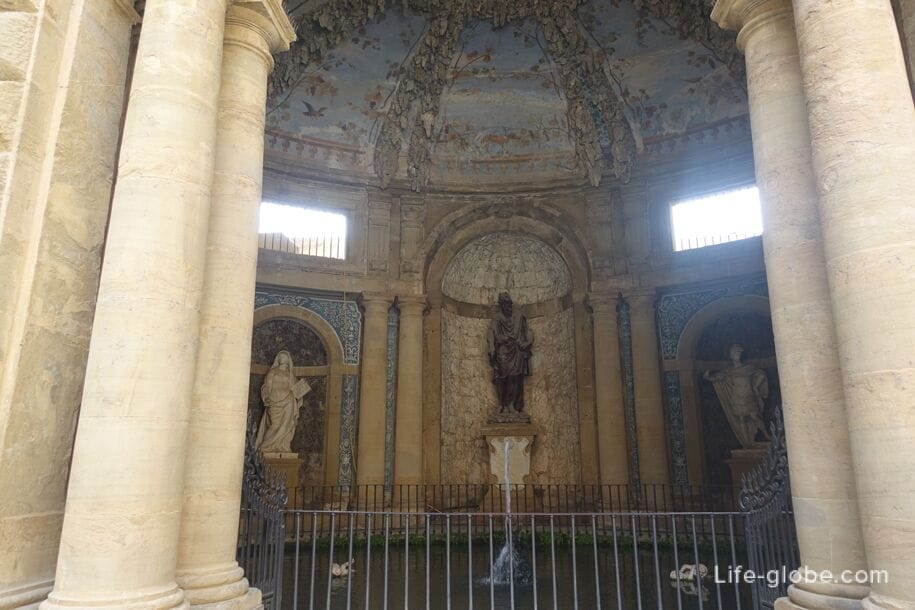

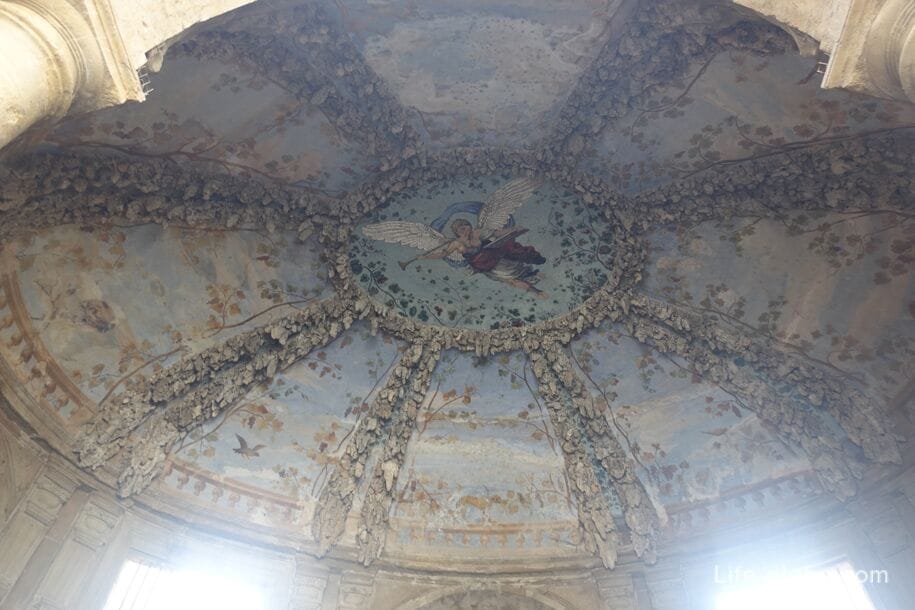
On the sides of the grotto, in niches, there are two valuable sculptures of Roman times, Hercules and Antaeus and a Resting Hercules.
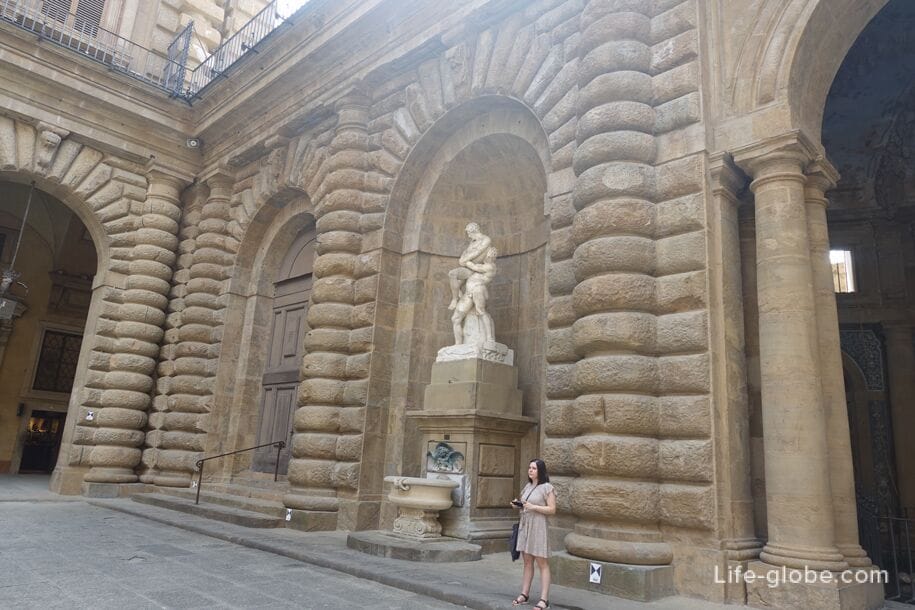

You can see the courtyard of the palace when visiting both the palace itself and the Boboli Gardens.
The Museum in the Palazzo Pitti Palace is a museum complex located in the former halls, rooms and other rooms of the palace, and divided into different exhibition themes.
Currently, there are: the Treasury of the Grand Dukes on the ground floor, the Palatine Gallery and the Imperial and Royal Apartments on the noble floor of the palace, the Gallery of Modern Art and the Museum of Fashion and Costume in the adjacent building.
Pitti Palace is also home to important cultural events.
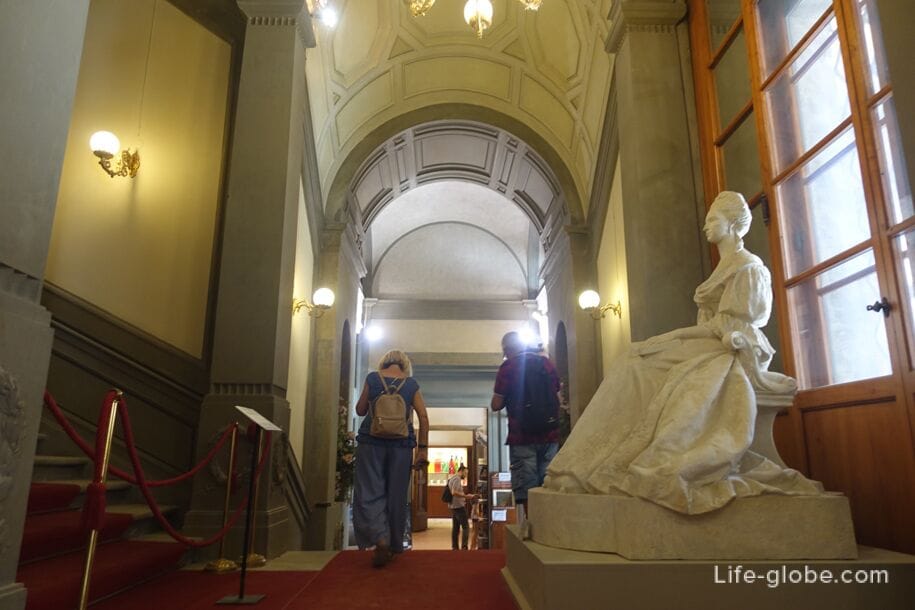
The Palatine Gallery, as well as the Royal and Imperial Apartments occupy the entire noble floor of the Palazzo Pitti.
The Palatine Gallery (Galleria Palatina), which is a beautifully decorated casket made of stucco, silk, sculptures and painted vaults, exhibits collections of Medici paintings.
This collection includes the largest concentration of Raphael's works in the world, as well as paintings by Titian, Tintoretto, Caravaggio and Rubens. Paintings in luxurious frames completely cover the walls of the rooms, enriched by the presence of sculptures, vases and tables.
So, in the gallery there is a hall of Jupiter, a hall of Hercules, a room of Venus, etc.
Photo of the Jupiter Hall
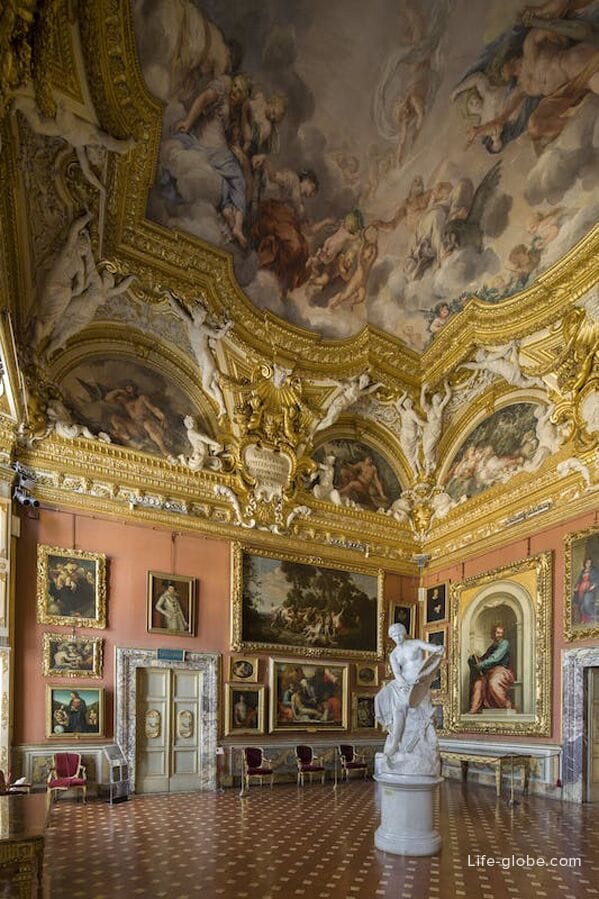
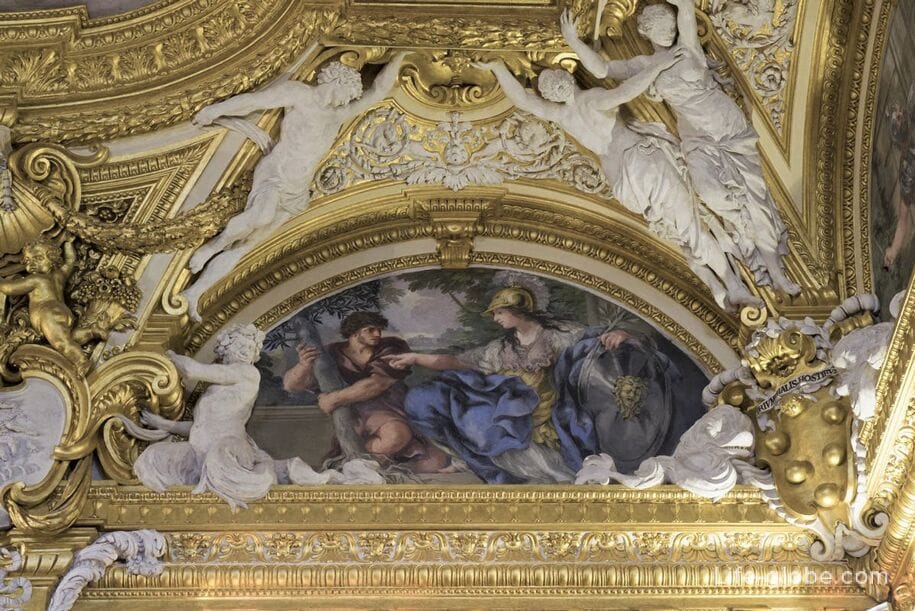
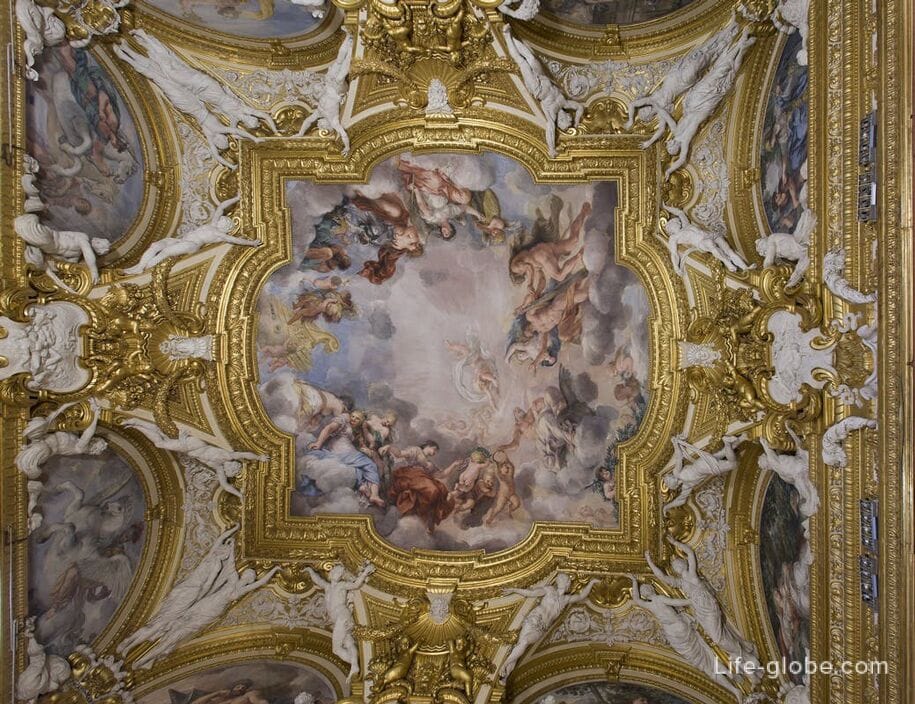
Photo of the Hall of Hercules
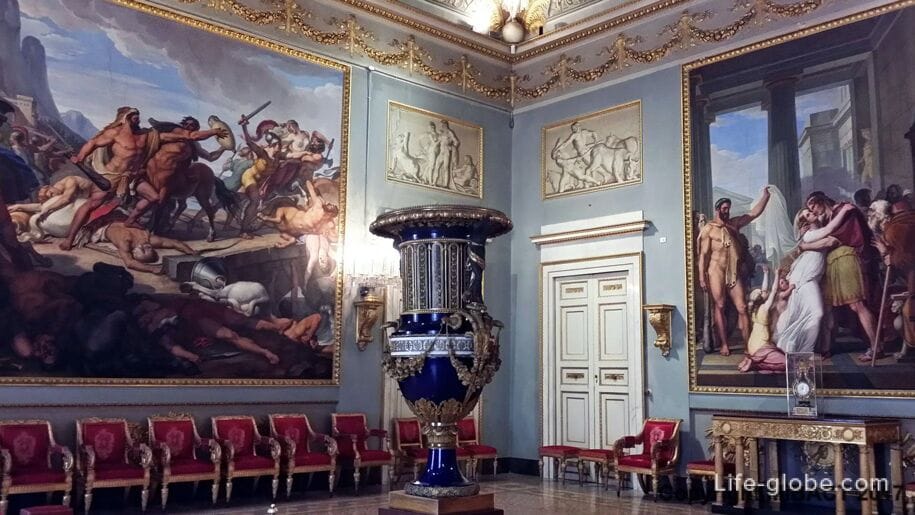
Photos of the Venus room
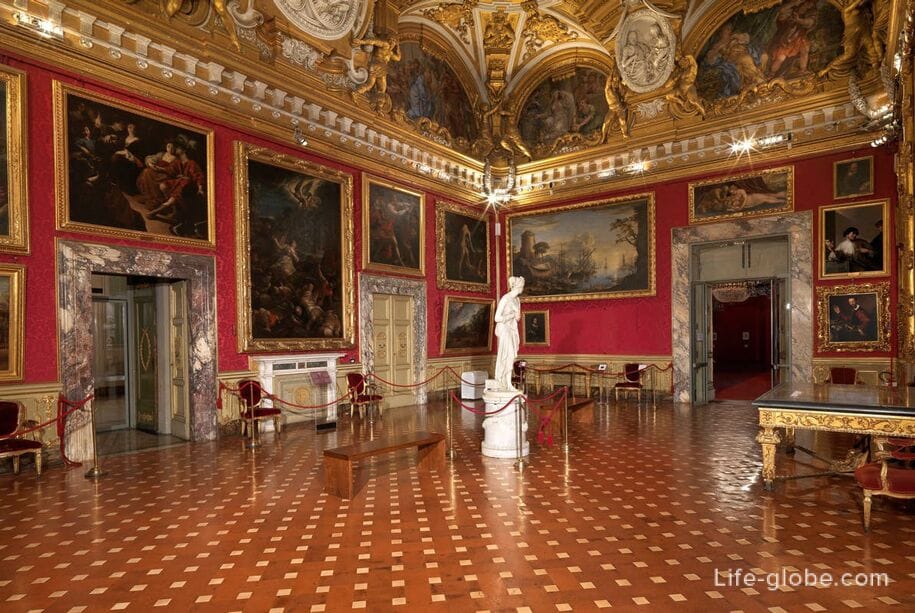
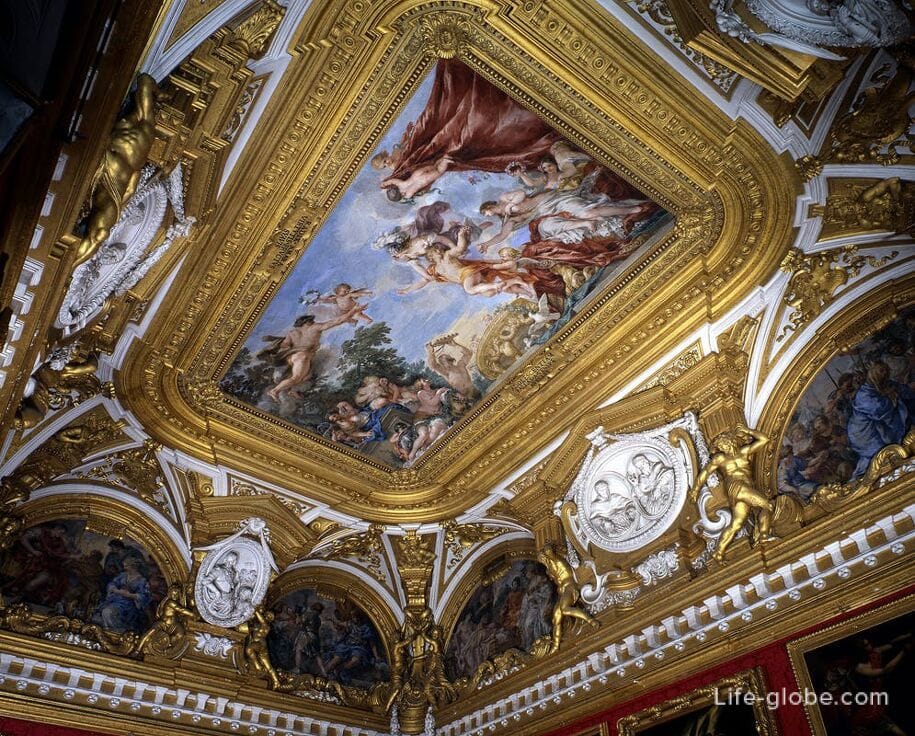
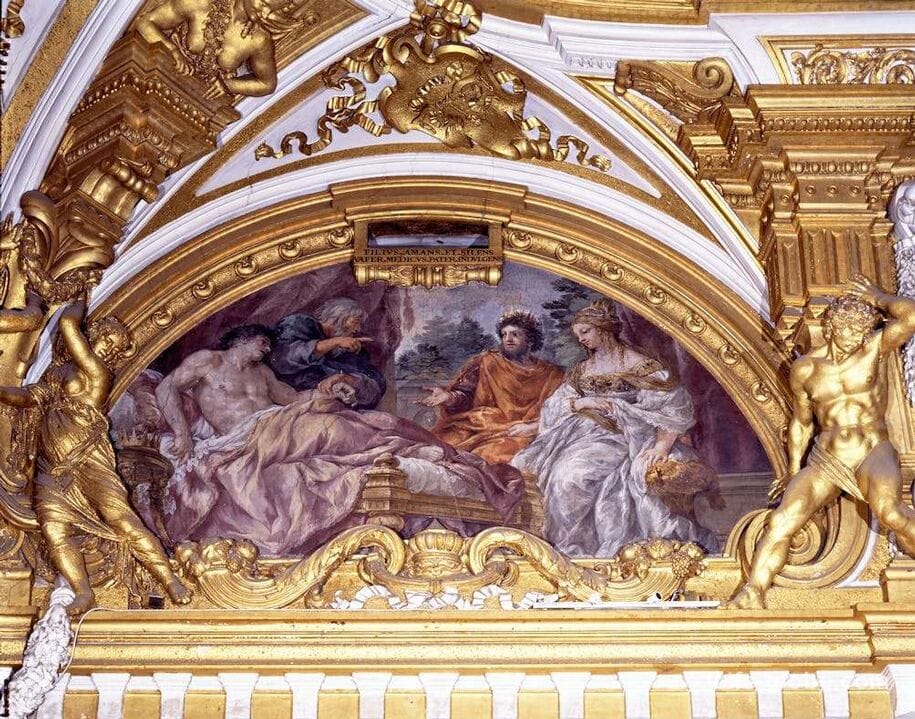
The Imperial and Royal Apartments (Appartamenti Imperiali e Reali) occupy fourteen reception rooms on the noble floor located in the right wing of the Palazzo Pitti.
At the beginning of the eighteenth century, the private chambers of Grand Duke Ferdinando de' Medici were located in these rooms of the palace. At the end of the eighteenth and in the first half of the nineteenth centuries, they were renovated and transformed by the Grand Dukes of Lorraine. Since 1865, the sovereigns of the Royal House of Savoy (from which the rooms got their name) lived here for a short period when Florence was the capital of Italy, leaving a strong trace of their taste in the general appearance of Royal and Imperial Apartments.
Today, luxuriously furnished with furniture from the collections of the Medici, Lorraine and Savoy, the rooms bear traces of the succession of dynasties of the Pitti Palace.
The rooms have rich decoration and elegant chandeliers, are furnished; there are also mirrors, vases, portraits, paintings and other household items and decor.
From the rooms
The Oval Office
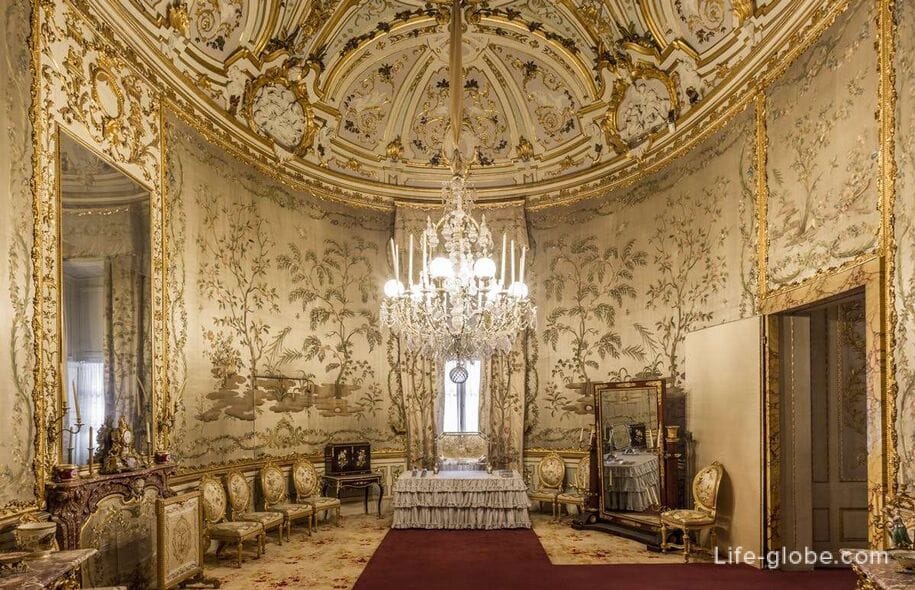
The Queen's Room
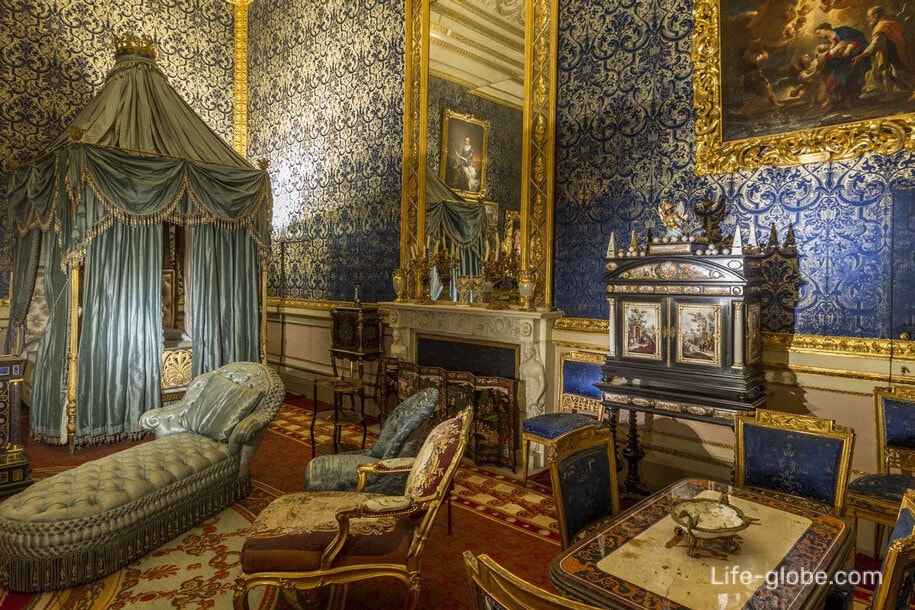
The Duke's private apartments

The Green Room and the Parrot Room

The King's Cabinet
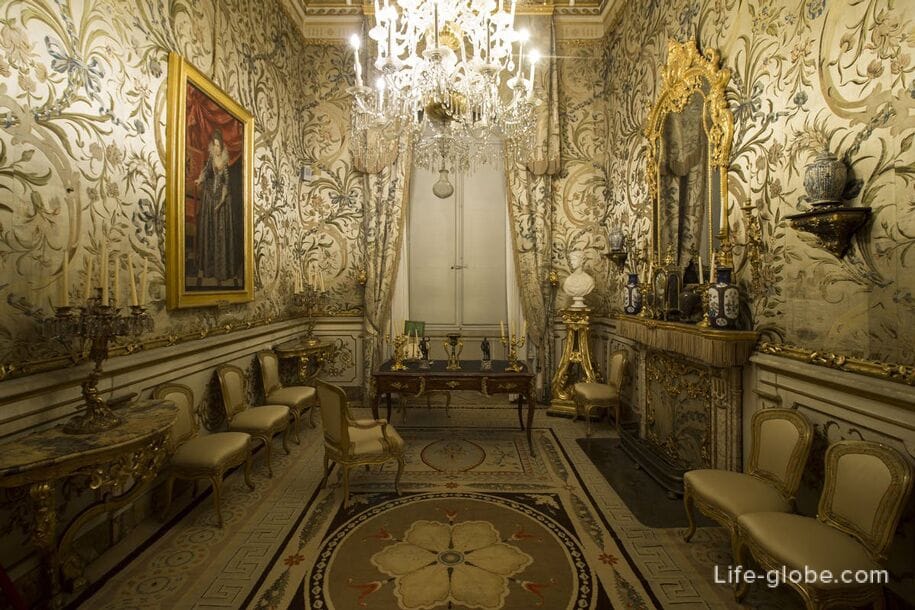
The Queen's Drawing Room
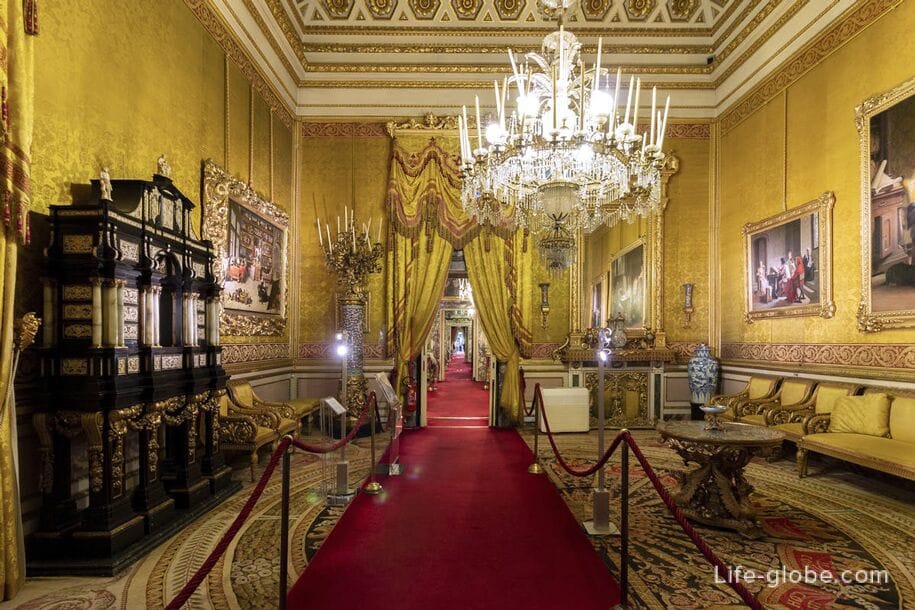
Red Living room
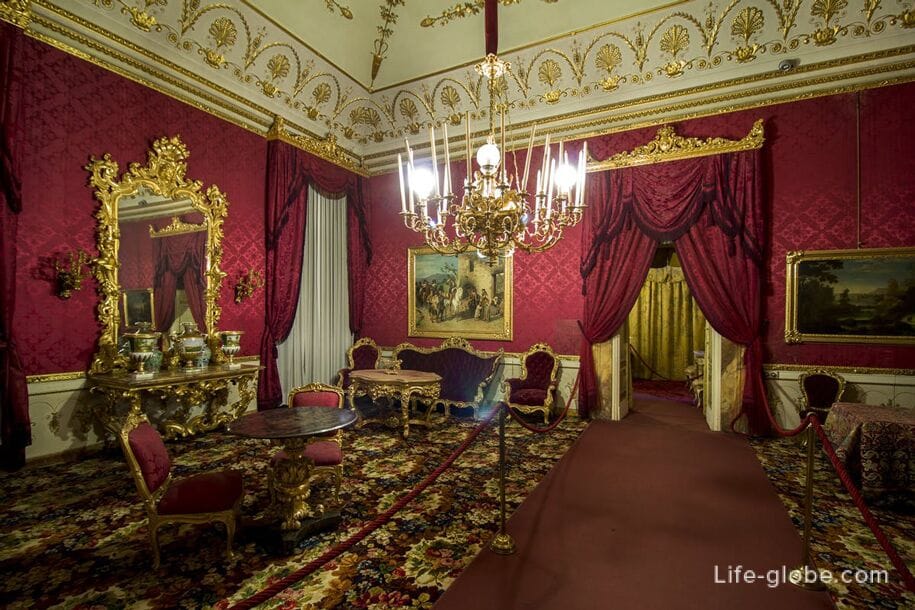
Throne Room

The chapel, which was created from part of the guest bedroom with the advent of the Grand Dukes of Lorraine. Today, the environment offers sacred works and objects of high craftsmanship: Madonna and Child by Florentine artist Carlo Dolci, made in 1675 for Vittoria della Rovere, widow of Ferdinando II de' Medici; other religious paintings are two school tondi by Botticelli and a copy of the seventeenth century "Madonna in the Rocks" by Leonardo, known primarily for its Baroque frame.
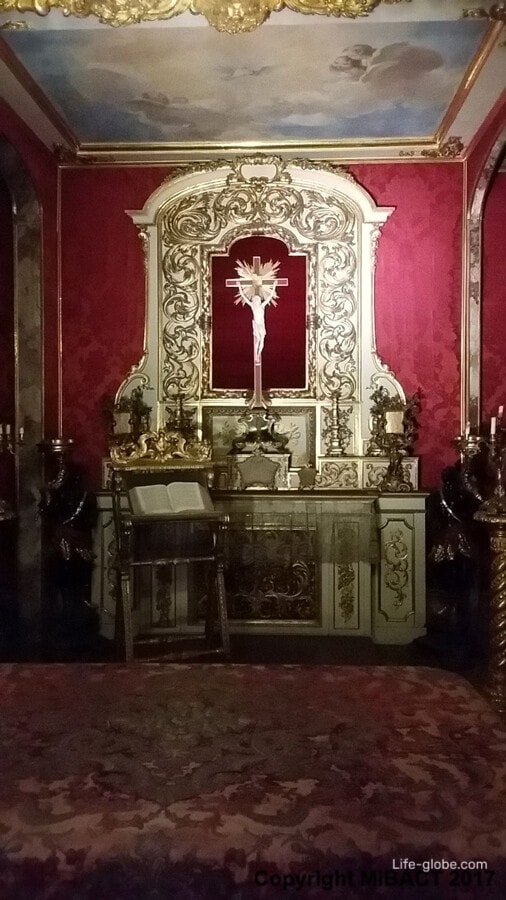
The Treasury of the Grand Dukes (Tesoro dei Granduchi), representing a rich collection of decorative and applied art, is located on the ground floor and mezzanine of the Palazzo Pitti.
She occupies the rooms of what was once the summer apartment of the Medici family. The walls, painted with frescoes on the occasion of the marriage of Ferdinando II de' Medici and Vittoria della Rovere (1637), are one of the first examples of quadraturism and "sfondato" present in Florence.
The precious "Medici Treasure" is kept here: vases made of semi-precious stones, rock crystal, amber and ivory; and fine silverware comes from the so-called "Salzburg Treasure", that is, from the collections of the bishops of Salzburg, brought to Florence by Ferdinand III of Lorraine.
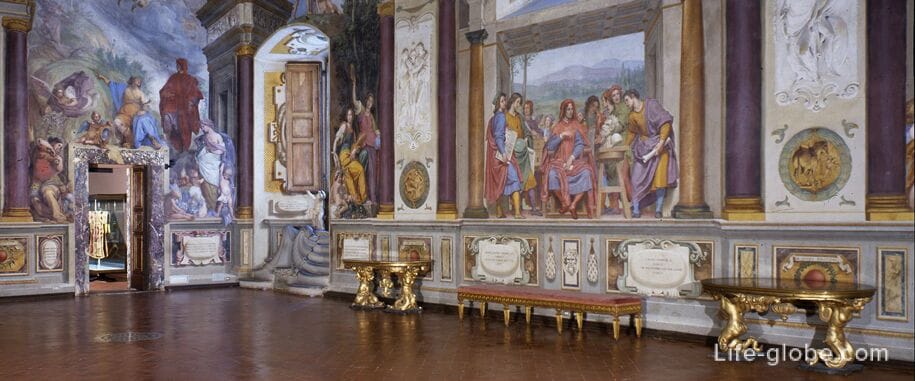
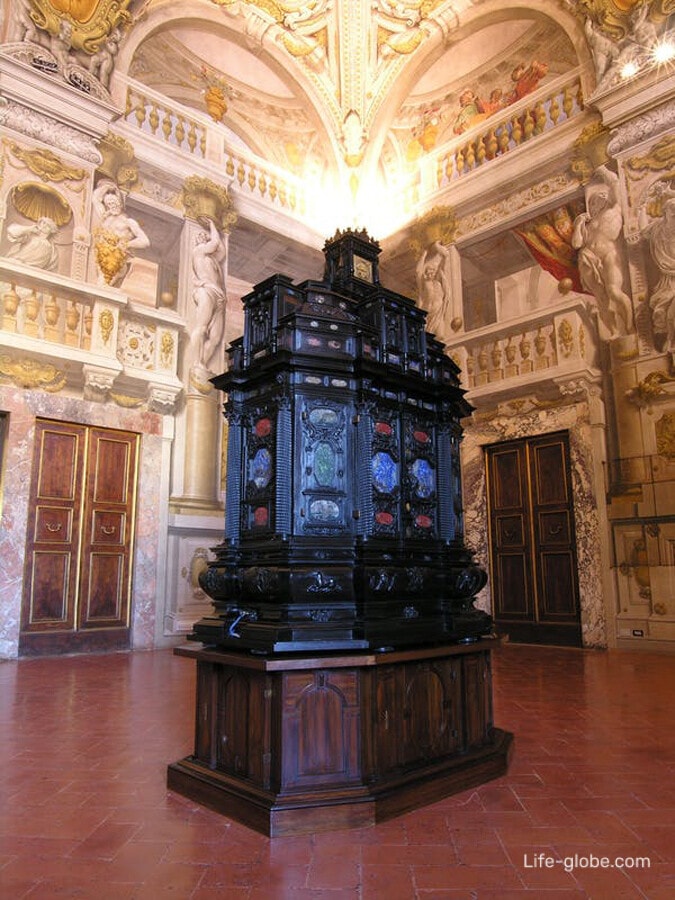
The Gallery of Modern Art (Galleria d'Arte Moderna), which houses paintings and sculptures from neoclassicism to the 1930s, in rooms that were once the residences of Lorraine, is located on the second floor of the Palazzo Pitti, from where you can enjoy views of Florence and the Boboli Gardens.
Collections of sculptures and paintings range from the late eighteenth century to the first decades of the twentieth century and are still replenished through donations and purchases.
The halls exhibit works belonging to neoclassicism, Romanticism and an important core of the Macchiaioli school of painting, mainly originating from the collections of Diego Martelli; there is also a large collection of historical paintings, famous Maremma landscapes by Giovanni Fattori, the head of the Macchiaioli family; the nineteenth century is expressed in decadence, symbolism, post-impressionism, divisionism. Among the artists: F. Ayez, S. Lega, T. Signorini, J. Fattori, C. Pissarro, M. Rosso, J. Boldini, P. Nomellini.
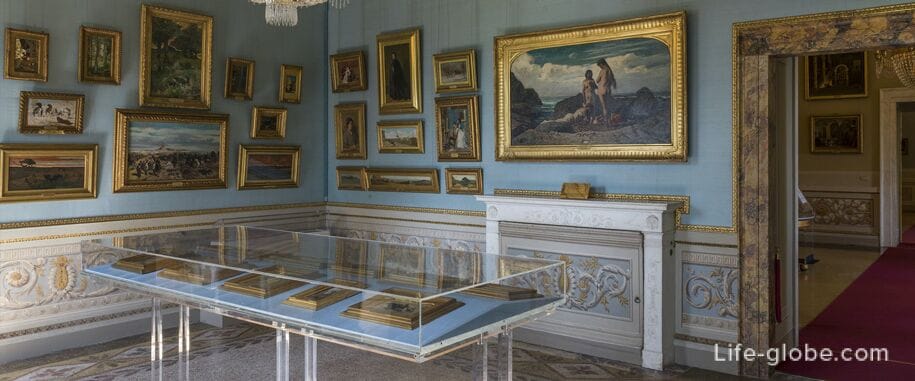
The Museum of Fashion and Costumes (Museo della Moda e del Costume) is located in the Palazzina della Meridiana, attached to the south wing of the Pitti Palace.
The building was started under Pietro Leopoldo di Lorena by architect Gaspero Maria Paoletti in 1776 and completed in 1830 by Pasquale Poccanti at the behest of Leopoldo II of Lorraine. It got its name from an astronomical instrument made by Vincenzo Viviani in 1699 and located in the lobby of the then apartment of Grand Duke Ferdinando de' Medici, in the vault of which Anton Domenico Gabbiani depicted an Allegory of Time and the Arts (1693).
The museum is dedicated to the history of fashion and its social significance. The collection includes clothing and fashion accessories from the 18th century to the present day, as well as underwear, jewelry and costume jewelry. The collection also includes stage clothes from famous films, plays and operas staged by great directors of the 20th century, which were worn by Italian and world stars of cinema and entertainment. Among the ancient costumes: the funeral clothes of the sixteenth century Cosimo I de' Medici, Eleonora di Toledo and her son Don Garzia.
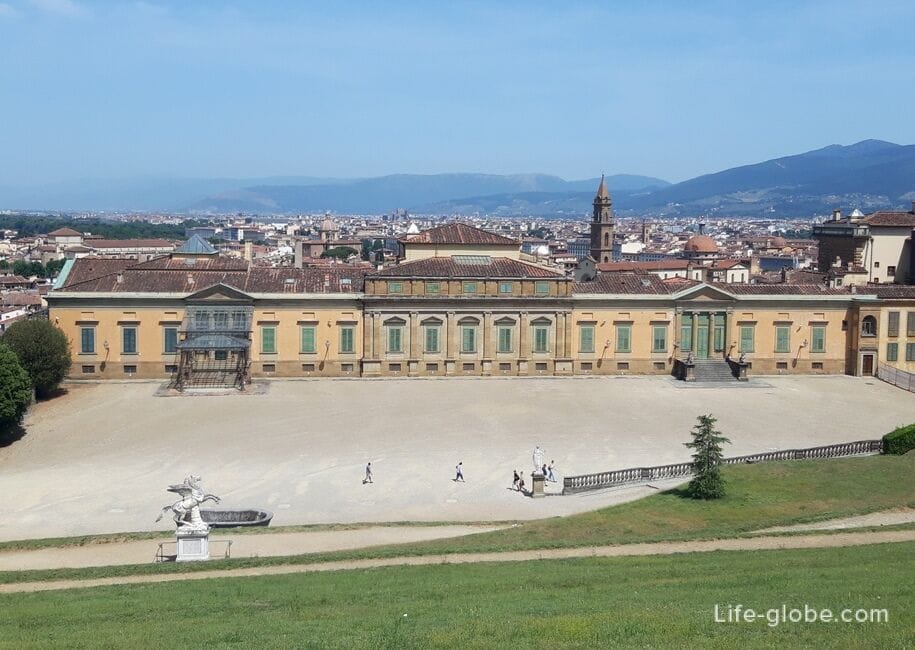
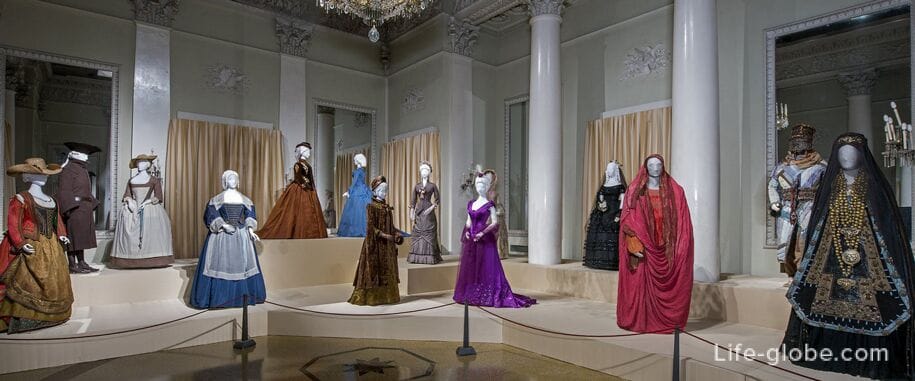
Also in the Pitti Palace is the Platinum Chapel (Cappella Palatina), created on the ground floor of the Pitti Palace, where the summer apartments of Cosimo III de' Medici and Marguerite Louise of Orleans were arranged on the occasion of their wedding in 1661.
The current appearance of the chapel is the result of a project commissioned by Grand Duke Ferdinand III of Habsburg Lorraine to architect Bernardo Fallani and artist Luigi Ademollo, who decorated the walls of the chapel and lobby with biblical and evangelical frescoes. Of great value is the altar made of semiprecious stone, which includes elements of the altar of the Chapel of the Princes in the Basilica of San Lorenzo (Basilica di San Lorenzo) in Florence.

Adjacent to the Pitti Palace, the Boboli Gardens (Giardino di Boboli) are the most famous and beautiful park in Florence, as well as one of the most important examples of an Italian garden in the world and a real open-air museum.
The gardens have a green area, divided in a regular way, with an area of about 45,000 m2, on which there is an amphitheater, an obelisk, statues, fountains, decorated grottoes and pavilions; also in the gardens there are alleys and paths for walking, there are flower beds, and from the open terraces of the garden there are beautiful views of Florence.
In the Palazzina del Cavaliere in the Boboli Gardens today there is a porcelain museum, which contains a collection of Meissen, Ginori and Sevre products from the collections of Lorraine. More about Boboli Gardens…
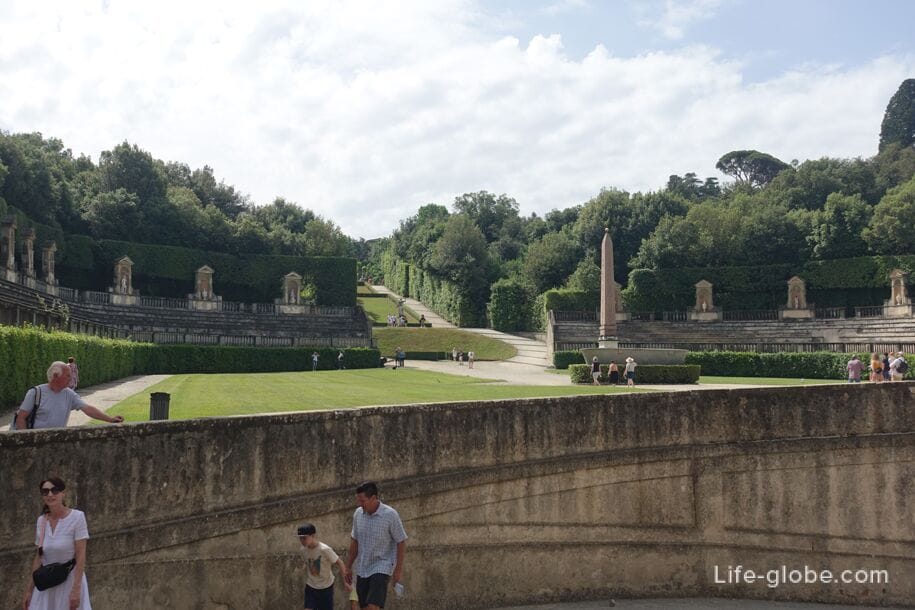
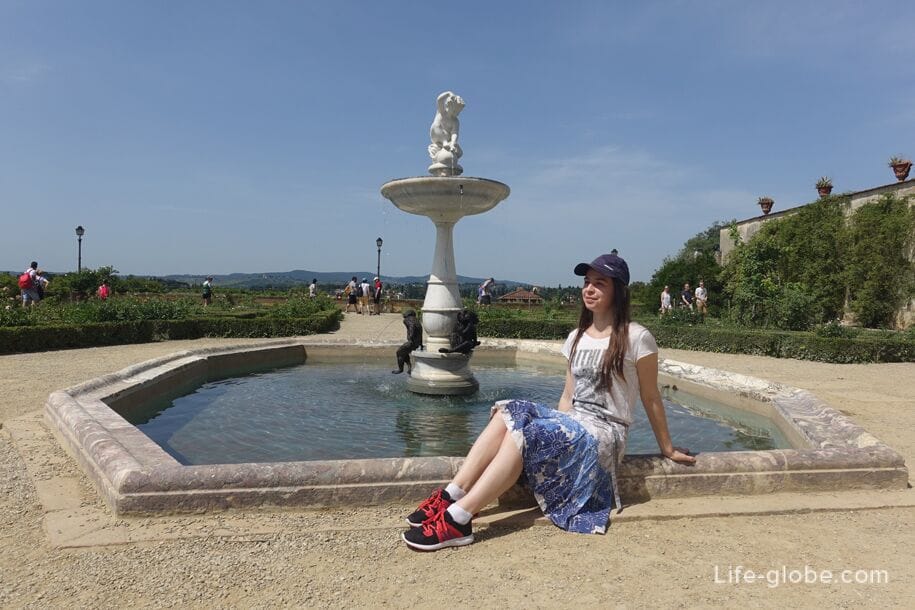
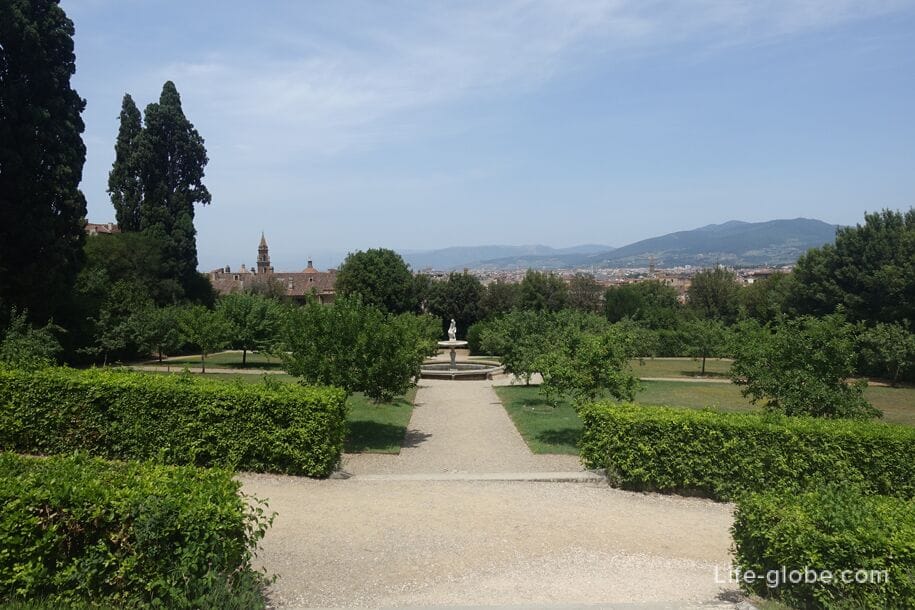
The Pitti Palace is connected by a long covered "hinged" Vasari corridor (Corridoio Vasariano), across the Arno River (passes over Vecchio Bridge), with Vecchio Palace (Palazzo Vecchio). The corridor can be visited. More about the Vasari Corridor…
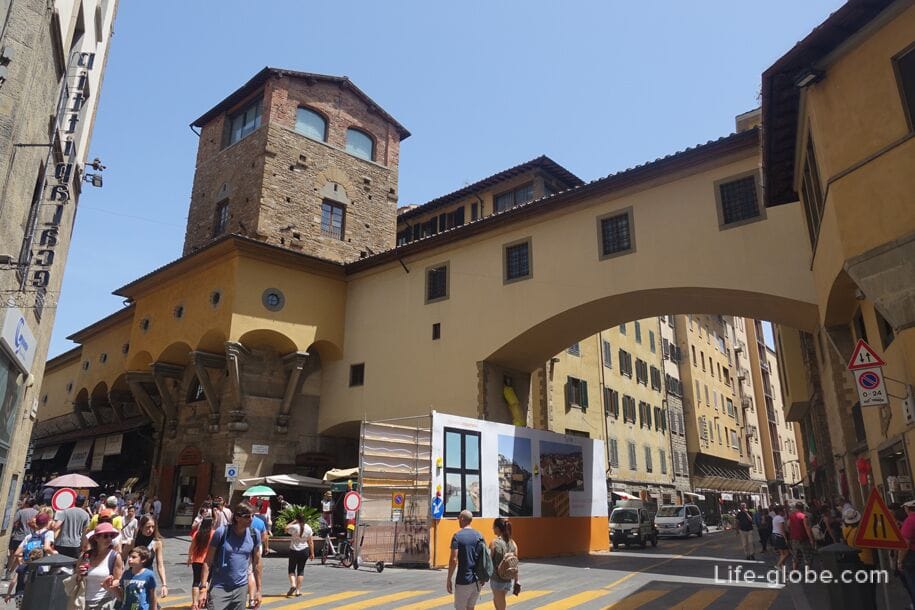
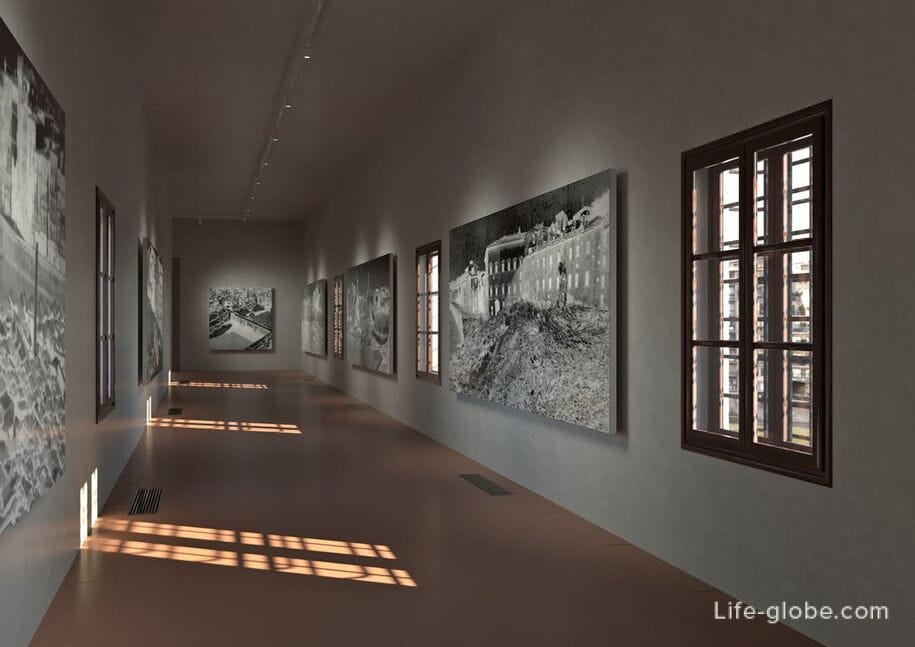
Entrance to the Pitti Palace (to its museums) is paid. Children under 18 are free of charge. There are discounted tickets.
Tickets can be purchased at the Pitti Palace ticket offices or online in advance.
You can also purchase a single ticket to the Pitti Palace + Boboli Gardens + the nearby Bardini Garden (Giardino Bardini).
The Pitti Palace is part of the Uffizi Museum complex (Museo degli Uffizi). You can purchase a 5-day package ticket to the Uffizi Gallery
All variations of tickets, as well as their cost, places of purchase, opening hours of the palace and gardens, visiting conditions, places and museums of the Pitti Palace, and other relevant information, we recommend that you check on the official website of the Uffizi Museum: uffizi.it/palazzo-pitti.
Address of the Pitti Palace: Piazza de' Pitti, 1, 50125 Firenze FI, Italy.
Coordinates of the Pitti Palace: 43°45'55.0"N 11°15'00.3"E (43.765264, 11.250094).
All accommodation facilities in Florence (hotels, apartments, guest houses, etc.), including in the historical center of the city and more remotely from it, can be viewed and booked here